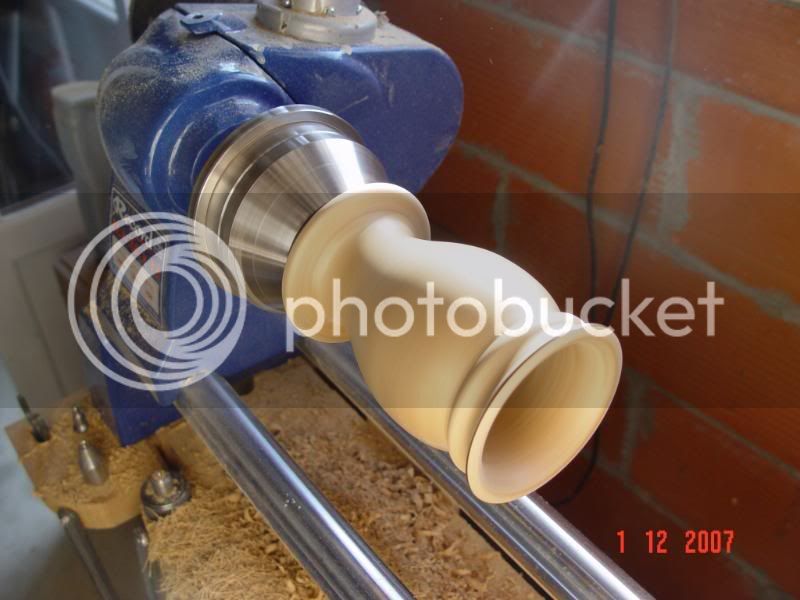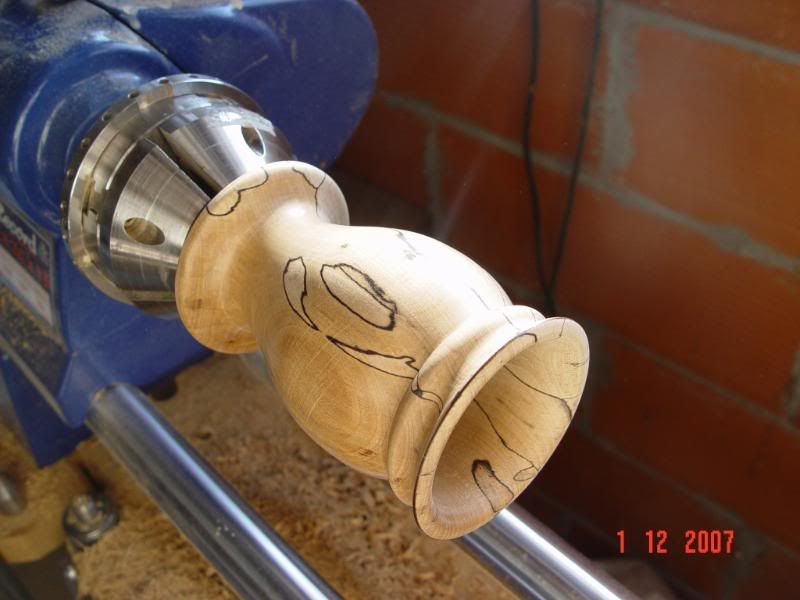GrahamR
Member
- Joined
- 23 Apr 2011
- Messages
- 11
- Reaction score
- 0
Hi my hames Graham and im new to the forum. Hope its ok to make a thread for my Turnings and probably pleas for advice and ideas of what to attempt haha.
Been turning for a month and grew fed up off turning bits of soft or rubbish wood so went out today and bought :
Some spalted beech (7cmx7cmx44cm) - appears to have a nice amount of spalting that runs deep without there being so much as to weaken the wood. (can someone confirm if the spalting does weaken the wood or if its just an old myth)
A block of Purpleheart very dark and rich purple though this may be mainly due to recent cutting? (8cmx8cmx23cm)- Got to be my favorite wood to look at so far and currently planing to make an earing stand much like the one in a recent woodturning magazine (dunno if i can mention the name and it escapes me anyway haha)
Also was given a tiny block of bubinga which as far as i can see could only be useful for making an egg? (4.8cmx4.8cmx9cm))
If u could give me anyadvice on possible difficulties with these woods it would be much apreciated and i hope u can help suggest what to make with the spalted and bubinga items looking forward to many chances of woodturning in the near future
looking forward to many chances of woodturning in the near future 
Cheers Graham
Been turning for a month and grew fed up off turning bits of soft or rubbish wood so went out today and bought :
Some spalted beech (7cmx7cmx44cm) - appears to have a nice amount of spalting that runs deep without there being so much as to weaken the wood. (can someone confirm if the spalting does weaken the wood or if its just an old myth)
A block of Purpleheart very dark and rich purple though this may be mainly due to recent cutting? (8cmx8cmx23cm)- Got to be my favorite wood to look at so far and currently planing to make an earing stand much like the one in a recent woodturning magazine (dunno if i can mention the name and it escapes me anyway haha)
Also was given a tiny block of bubinga which as far as i can see could only be useful for making an egg? (4.8cmx4.8cmx9cm))
If u could give me anyadvice on possible difficulties with these woods it would be much apreciated and i hope u can help suggest what to make with the spalted and bubinga items
Cheers Graham






